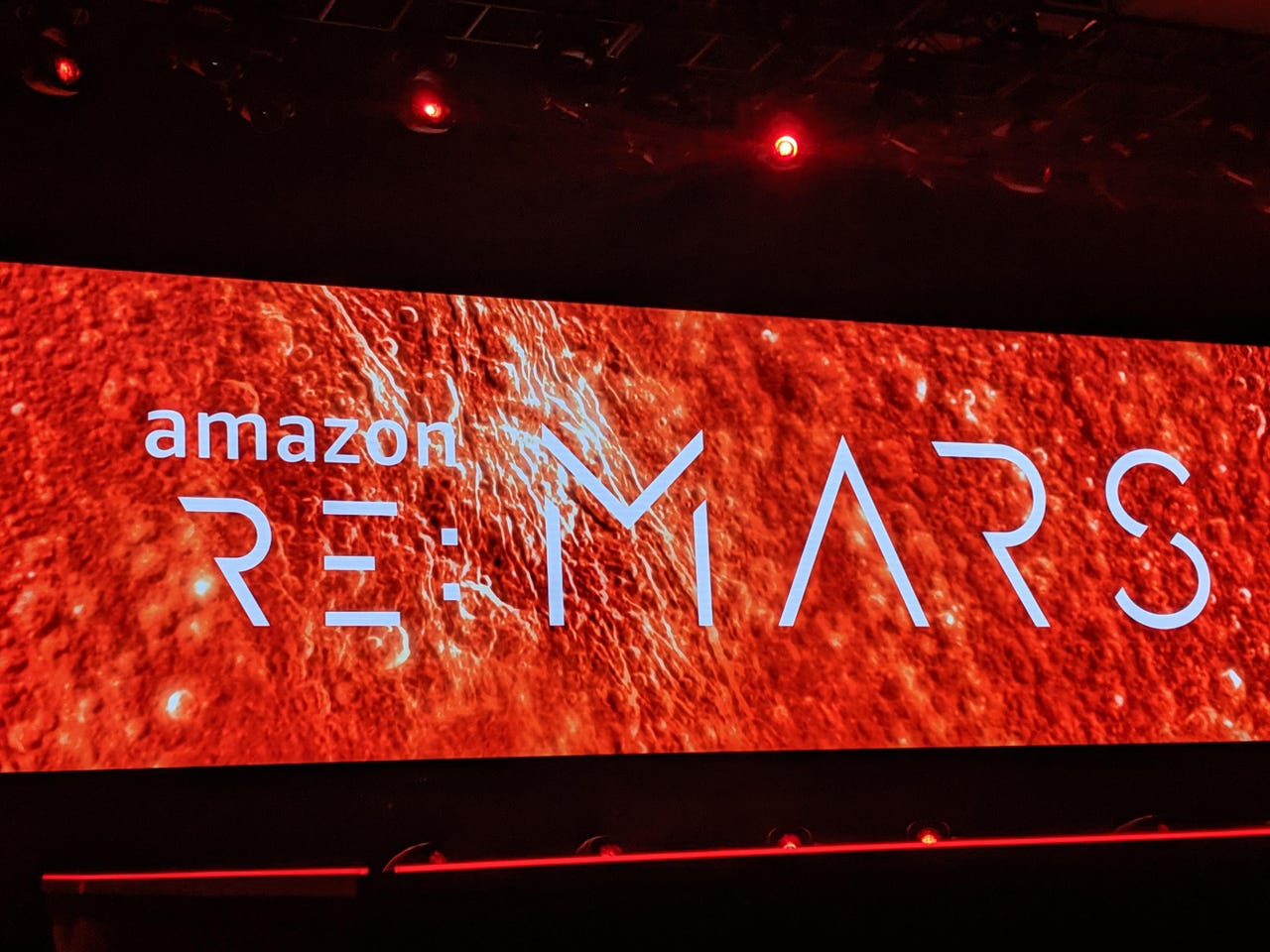Amazon shares how it leverages AI throughout the business


For its inaugural re:Mars conference, Amazon invited attendees it calls "dreamers and builders" -- business leaders, scientists and others who are making contributions to the field of artificial intelligence and machine learning. During the Wednesday keynote at the Las Vegas event, Amazon brandished its own AI credentials, making the case to its potential customers and partners that its teams -- across the business -- are pushing forward the stat of the art.
Across every step of its e-commerce operations, AI is at work: Amazon shared the way it uses AI to power e-commerce forecasting, and it showcased StyleSnap, an AI-powered feature that lets shoppers in the Amazon app takes a picture of a piece of clothing and find similar items for sale.
Amazon also revealed newest fulfillment center robots, called Pegasus and Xanthus, as well as a new drone that Amazon says will start commercial deliveries within months.
For in-store shopping, Amazon revealed new details about the technology that drives its Amazon Go stores. To stay connected to customers in their homes, Amazon revealed how it's driving forward conversational AI with Alexa.
Must read
- Amazon's re:Mars serves up AI inspiration
- Amazon unveils drone it says will be delivering packages within months
"Amazon has been a technology company from the start," Jeff Wilke, CEO of Amazon's Worldwide Consumer division, said during the Wednesday keynote. That said, he added, "We're only in the beginning stages of truly understanding the potential" of AI.
Wilke walked through how, when he joined Amazon in 1999 as head of the global operations team, the company was "relying primarily on Skip" to manage package fulfillment. Skip isn't an algorithm, he said -- "Skip is a dude."
Now automation is a key part of Amazon operations. The company is on a path to deploying more than 200,000 robots, Wilke said. As it has deployed those robots, it's also hired more than 300,000 workers -- and it's improved the safety and productivity of its warehouse workers, Wilke said, while paying higher wages.
Wilke walked through the evolution of product discovery on Amazon.com, which was initially based on human curation and best-seller lists.
"This method was inherently biased," he said, and "failed to captured niche interests like mushroom picking."
That led to the creation of Amazon's first recommendation engine. Wilke outlined the technical details of the matrix-based completion methods that Amazon tested, which eventually led to its first commercial deep learning model.
Throughout, "We didn't sequester our scientists," he said. Instead, data scientists were integrated into teams focused on the product and customer experience. "They start with the customer experience, not the machine learning algorithm," he said.
Similarly, for the development of its in-store shopping experience, Amazon Go VP Dilip Kumar stressed, "If you start with a genuine customer problem, you can use the power of machine learning... to build a stellar customer experience."
To create the concept of the Amazon Go store -- "take what you want and just go," according to Kumar -- Amazon had to choose technologies to eliminate the checkout process. It settled on computer vision.
The first problem to solve, he said, was identifying the customer account and their precise location in the store. Amazon utilized geometry and deep learning to not just predict customer account location but accurately associate interactions to the right customer account.
The next problem to solve was the object identification problem, which came with its own set of challenges -- including limited data for training. Amazon created synthetic data sets to solve that problem, Kumar said -- a technique the company uses for all AI projects that require large data sets.
"Each of these problems was hard, but they were essential to be able to hit the accuracy bar to make this experience work," Kumar said. There are currently 12 Amazon Go stores in Seattle, San Francisco, New York and Chicago.